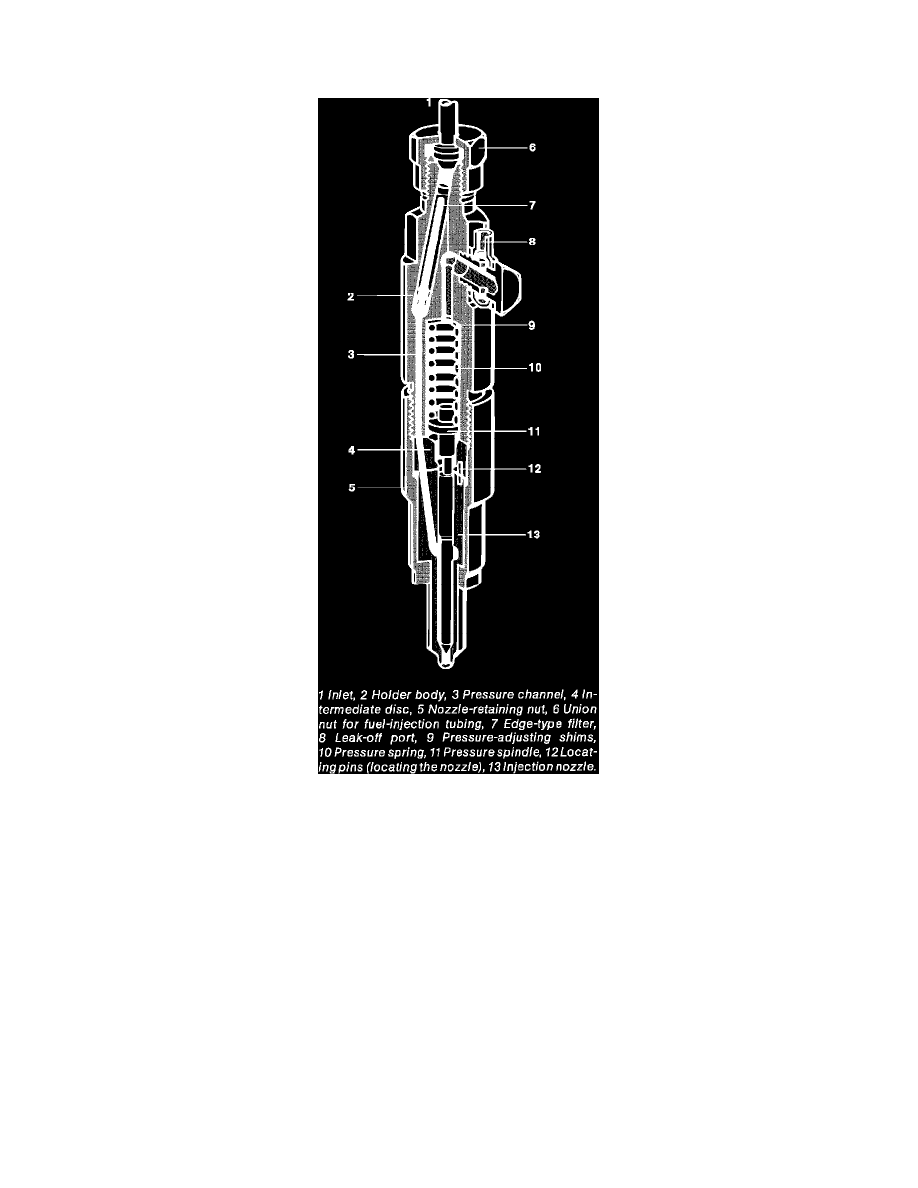Vanagon L4-1588cc 1.6L DSL SOHC (1983)

Fuel Injector: Description and Operation
Nozzle Holder
Fig. 13 Nozzle and Holder Assembly
The nozzle holder, Fig. 13, secures the injector nozzle in the cylinder head and seals the combustion chamber. The high pressure, or injector, line
leads to the holder. A leakage-fuel connection is also part of the nozzle holder.
The holder combination consists of the holder and injector nozzle. Components of the nozzle holder include the body, intermediate sleeve and nozzle
retaining nut as well as pressure spindle, spring and adjusting shims.
The nozzle is centered in the holder body by the retaining nut. When body and retaining nut are screwed together, the intermediate sleeve is clamped
tightly against the body's flat face. Pressure spindle, spring and adjusting shim are inside the body, whereby the spindle guides the spring and the nozzle
needle centers the spindle.
Inside the holder body on the side of the pressure-spring chamber, the high-pressure passage merges into the body's inlet bore, thus connecting the
injector with the injection pump's high-pressure line. According to application, a filter can be installed in the pressure passage.
The pressure spring in the holder body acts on the nozzle needle via the pressure spindle. Spring preload determines the nozzle's opening pressure,
which can be adjusted by the pressure adjusting shims. Fuel flows through bores in holder body, intermediate sleeve and injection nozzle to the nozzle
seat; during injection, fuel pressure lifts the needle and fuel flows through the blind-hole orifice and the injection bores into the combustion chamber. As
pressure then falls off, the spring returns the needle to its seat and injection is completed.
